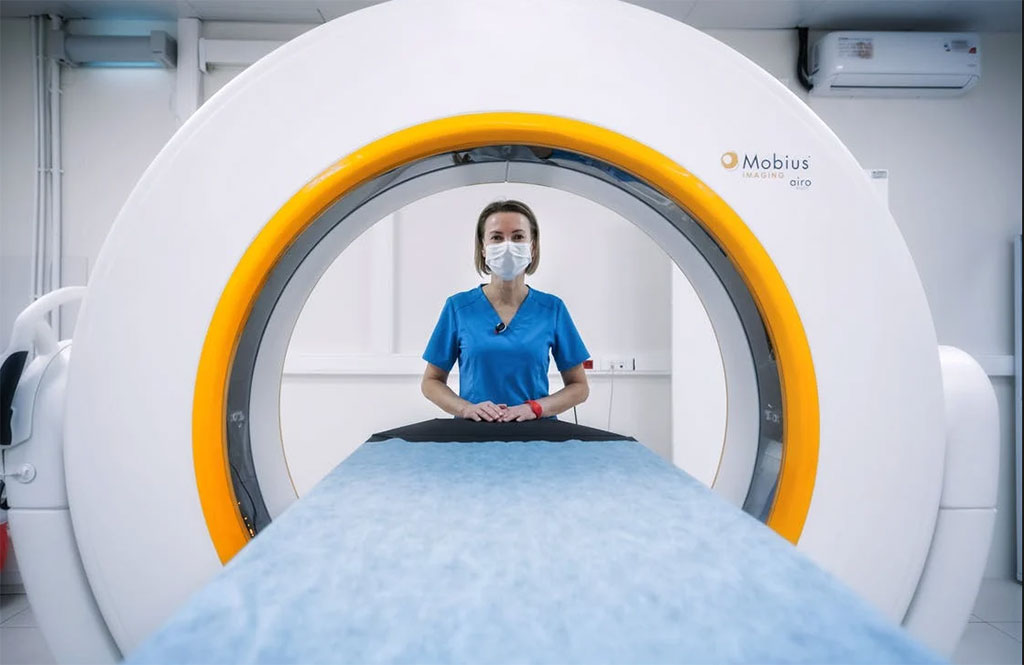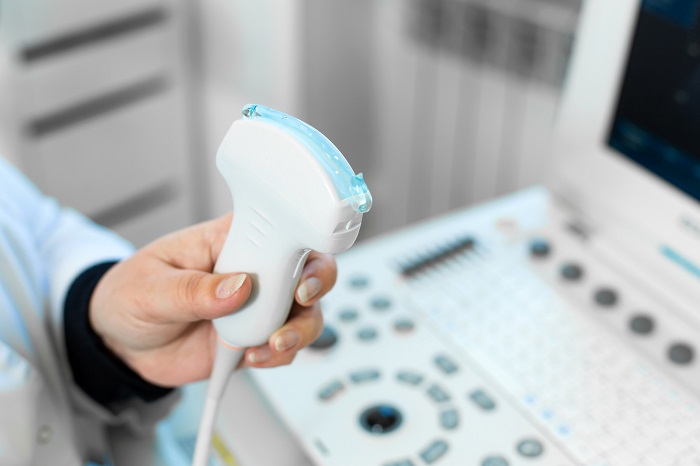MRI Shows Brain Inflammation in Vivo for the First Time
|
By MedImaging International staff writers Posted on 30 May 2022 |

Degenerative brain diseases such as Alzheimer's and other dementias, Parkinson's or multiple sclerosis are a pressing and difficult problem to address. Sustained activation of two types of brain cells, microglia and astrocytes leads to chronic inflammation in the brain that is one of the causes of neurodegeneration and contributes to its progression. However, there is a lack of non-invasive approaches capable of specifically characterizing brain inflammation in vivo. Now, researchers have obtained for the first time images of the activation of microglia and astrocytes, the two types of cells involved in neuroinflammation, using diffusion-weighted magnetic resonance (dw-MRI).
An innovative strategy developed by researchers at the Institute of Neurosciences CSIC-UMH (Alicante, Spain) has made this important breakthrough possible which may be crucial to change the course of the study and treatment of neurodegenerative diseases. The research has demonstrated that dw-MRI can noninvasively and differentially detect the activation of microglia and astrocytes, two types of brain cells that are at the basis of neuroinflammation and its progression.
The current gold standard for specifically characterizing brain inflammation in vivo is positron emission tomography (PET), but it is difficult to generalize and is associated with exposure to ionizing radiation, so its use is limited in vulnerable populations and in longitudinal studies, which require the use of PET repeatedly over a period of years, as is the case in neurodegenerative diseases. Another drawback of PET is its low spatial resolution, which makes it unsuitable for imaging small structures, with the added drawback that inflammation-specific radiotracers are expressed in multiple cell types (microglia, astrocytes and endothelium), making it impossible to differentiate between them.
In the face of these drawbacks, dw-MRI has the unique ability to image brain microstructure in vivo noninvasively and with high resolution by capturing the random movement of water molecules in the brain parenchyma to generate contrast in MRI images. In addition to demonstrating using dw-MRI allows imaging of microglial and astrocyte activation in the gray matter of the brain, the researchers have also shown that this technique is sensitive and specific for detecting inflammation with and without neurodegeneration, so that both conditions can be differentiated. In addition, dw-MRI makes it possible to discriminate between inflammation and demyelination characteristic of multiple sclerosis.
To validate the model, the researchers used an established paradigm of inflammation in rats based on intracerebral administration of lipopolysaccharide (LPS). In this paradigm, neuronal viability and morphology are preserved, while inducing, first, an activation of microglia (the brain's immune system cells), and in a delayed manner, an astrocyte response. This temporal sequence of cellular events allows glial responses to be transiently dissociated from neuronal degeneration and the signature of reactive microglia investigated independently of astrogliosis.
To isolate the imprint of astrocyte activation, the researchers repeated the experiment by pretreating the animals with an inhibitor that temporarily ablates about 90% of microglia. Subsequently using an established paradigm of neuronal damage, they tested whether the model was able to unravel neuroinflammatory "footprints" with and without concomitant neurodegeneration. Finally, the researchers used an established paradigm of demyelination, based on focal administration of lysolecithin, to demonstrate that the biomarkers developed do not reflect the tissue alterations frequently found in brain disorders.
"This is the first time it has been shown that the signal from this type of MRI (dw-MRI) can detect microglial and astrocyte activation, with specific footprints for each cell population. This strategy we have used reflects the morphological changes validated post-mortem by quantitative immunohistochemistry," the researchers noted.
Related Links:
Institute of Neurosciences CSIC-UMH
Latest MRI News
- Low-Cost Whole-Body MRI Device Combined with AI Generates High-Quality Results
- World's First Whole-Body Ultra-High Field MRI Officially Comes To Market
- World's First Sensor Detects Errors in MRI Scans Using Laser Light and Gas
- Diamond Dust Could Offer New Contrast Agent Option for Future MRI Scans
- Combining MRI with PSA Testing Improves Clinical Outcomes for Prostate Cancer Patients
- PET/MRI Improves Diagnostic Accuracy for Prostate Cancer Patients
- Next Generation MR-Guided Focused Ultrasound Ushers In Future of Incisionless Neurosurgery
- Two-Part MRI Scan Detects Prostate Cancer More Quickly without Compromising Diagnostic Quality
- World’s Most Powerful MRI Machine Images Living Brain with Unrivaled Clarity
- New Whole-Body Imaging Technology Makes It Possible to View Inflammation on MRI Scan
- Combining Prostate MRI with Blood Test Can Avoid Unnecessary Prostate Biopsies
- New Treatment Combines MRI and Ultrasound to Control Prostate Cancer without Serious Side Effects
- MRI Improves Diagnosis and Treatment of Prostate Cancer
- Combined PET-MRI Scan Improves Treatment for Early Breast Cancer Patients
- 4D MRI Could Improve Clinical Assessment of Heart Blood Flow Abnormalities
- MRI-Guided Focused Ultrasound Therapy Shows Promise in Treating Prostate Cancer
Channels
Radiography
view channel
Novel Breast Imaging System Proves As Effective As Mammography
Breast cancer remains the most frequently diagnosed cancer among women. It is projected that one in eight women will be diagnosed with breast cancer during her lifetime, and one in 42 women who turn 50... Read more
AI Assistance Improves Breast-Cancer Screening by Reducing False Positives
Radiologists typically detect one case of cancer for every 200 mammograms reviewed. However, these evaluations often result in false positives, leading to unnecessary patient recalls for additional testing,... Read moreUltrasound
view channel
Portable Ultrasound Tool Uses AI to Detect Arm Fractures More Quickly
Suspected injuries to the upper limbs are a major reason for visits to hospital emergency departments. Currently, wait times for an X-ray and subsequent doctor consultation can vary widely, typically ranging... Read more.jpg)
Diagnostic System Automatically Analyzes TTE Images to Identify Congenital Heart Disease
Congenital heart disease (CHD) is one of the most prevalent congenital anomalies worldwide, presenting substantial health and financial challenges for affected patients. Early detection and treatment of... Read more
Super-Resolution Imaging Technique Could Improve Evaluation of Cardiac Conditions
The heart depends on efficient blood circulation to pump blood throughout the body, delivering oxygen to tissues and removing carbon dioxide and waste. Yet, when heart vessels are damaged, it can disrupt... Read more
First AI-Powered POC Ultrasound Diagnostic Solution Helps Prioritize Cases Based On Severity
Ultrasound scans are essential for identifying and diagnosing various medical conditions, but often, patients must wait weeks or months for results due to a shortage of qualified medical professionals... Read moreNuclear Medicine
view channel
New PET Biomarker Predicts Success of Immune Checkpoint Blockade Therapy
Immunotherapies, such as immune checkpoint blockade (ICB), have shown promising clinical results in treating melanoma, non-small cell lung cancer, and other tumor types. However, the effectiveness of these... Read moreNew PET Agent Rapidly and Accurately Visualizes Lesions in Clear Cell Renal Cell Carcinoma Patients
Clear cell renal cell cancer (ccRCC) represents 70-80% of renal cell carcinoma cases. While localized disease can be effectively treated with surgery and ablative therapies, one-third of patients either... Read more
New Imaging Technique Monitors Inflammation Disorders without Radiation Exposure
Imaging inflammation using traditional radiological techniques presents significant challenges, including radiation exposure, poor image quality, high costs, and invasive procedures. Now, new contrast... Read more
New SPECT/CT Technique Could Change Imaging Practices and Increase Patient Access
The development of lead-212 (212Pb)-PSMA–based targeted alpha therapy (TAT) is garnering significant interest in treating patients with metastatic castration-resistant prostate cancer. The imaging of 212Pb,... Read moreGeneral/Advanced Imaging
view channelBone Density Test Uses Existing CT Images to Predict Fractures
Osteoporotic fractures are not only devastating and deadly, especially hip fractures, but also impose significant costs. They rank among the top chronic diseases in terms of disability-adjusted life years... Read more
AI Predicts Cardiac Risk and Mortality from Routine Chest CT Scans
Heart disease remains the leading cause of death and is largely preventable, yet many individuals are unaware of their risk until it becomes severe. Early detection through screening can reveal heart issues,... Read moreImaging IT
view channel
New Google Cloud Medical Imaging Suite Makes Imaging Healthcare Data More Accessible
Medical imaging is a critical tool used to diagnose patients, and there are billions of medical images scanned globally each year. Imaging data accounts for about 90% of all healthcare data1 and, until... Read more
Global AI in Medical Diagnostics Market to Be Driven by Demand for Image Recognition in Radiology
The global artificial intelligence (AI) in medical diagnostics market is expanding with early disease detection being one of its key applications and image recognition becoming a compelling consumer proposition... Read moreIndustry News
view channel
Hologic Acquires UK-Based Breast Surgical Guidance Company Endomagnetics Ltd.
Hologic, Inc. (Marlborough, MA, USA) has entered into a definitive agreement to acquire Endomagnetics Ltd. (Cambridge, UK), a privately held developer of breast cancer surgery technologies, for approximately... Read more
Bayer and Google Partner on New AI Product for Radiologists
Medical imaging data comprises around 90% of all healthcare data, and it is a highly complex and rich clinical data modality and serves as a vital tool for diagnosing patients. Each year, billions of medical... Read more


















